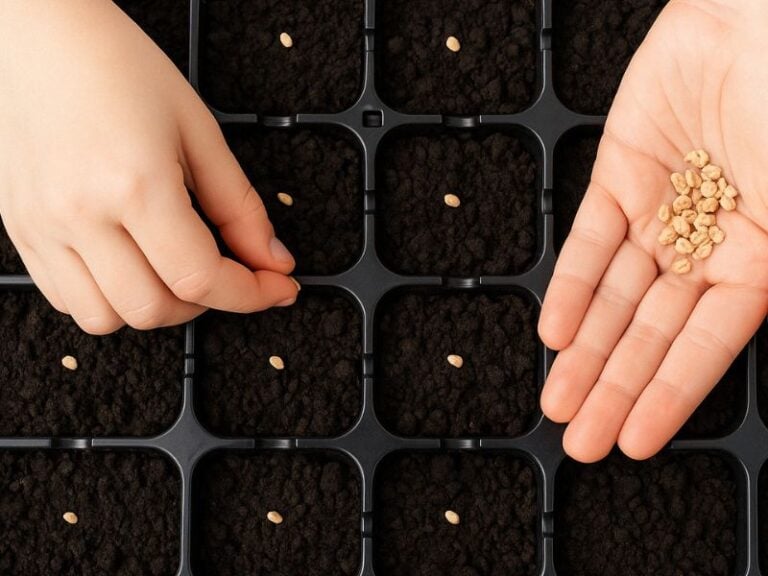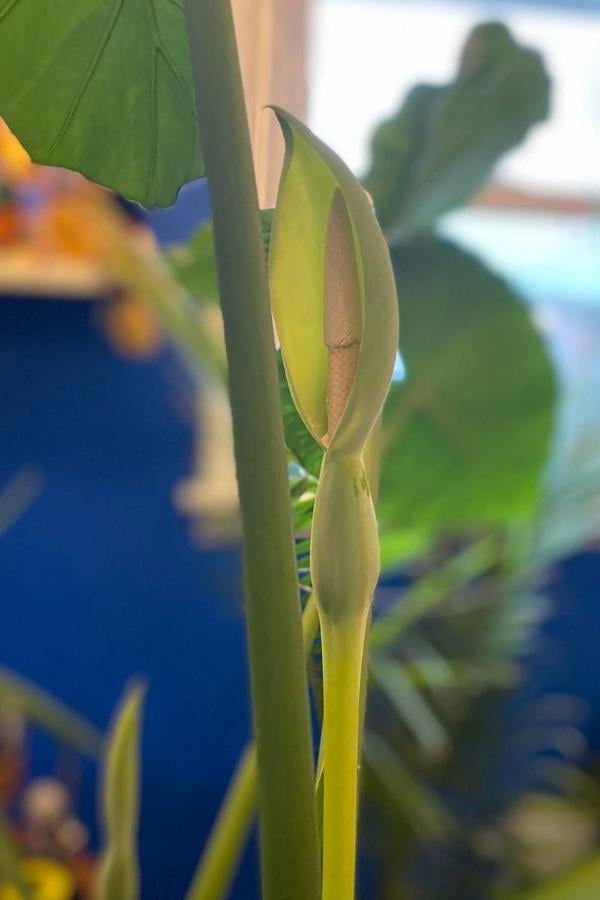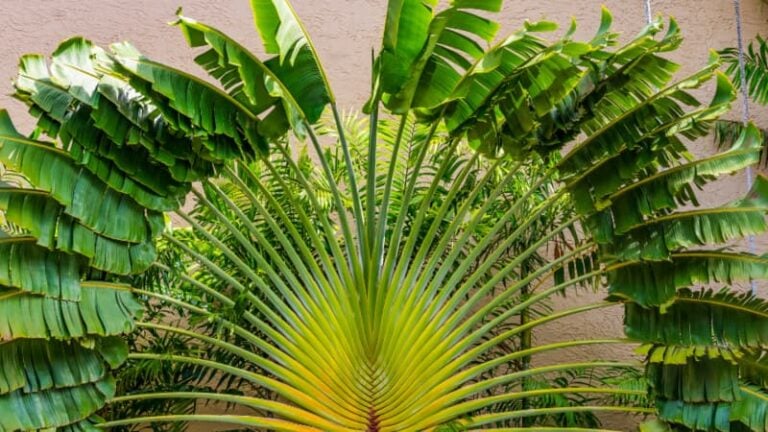An extremely popular landscape plant is the star jasmine (Trachelosperum jasminoides), thanks to its sweet, floral scent as well as its glossy leaves and showy flowers.
Apart from its physical traits, the star jasmine is also famous for its incredible growth rate.
So, really… How fast does star jasmine grow?
If conditions are favorable, this fast-growing ever-twining masterpiece can grow 3 to 6 feet per year. There must be a warm, humid environment with direct sunlight, and these conditions happen most often in the summer and spring. The plant needs a lot of energy, nutrients, and time to establish its root system before it can grow so fast.
In this article, we’re going to delve comprehensively into the speedy nature of your jasmine plant’s growth so you can manipulate it.
Along the way, we’re also going to discuss how you should care for your plant throughout all its growth phases.
Contents
Is Star Jasmine a Fast-growing Vine?
Yes, the star jasmine is a fast-growing vine that germinates at a rate of at least 3 feet a year or at most 6 feet.
With the right conditions, your star jasmine or confederate jasmine can grow as high as 18 to 20 feet and about 20 feet wide after a few years. If you plan to let it climb around a structure.
| Star Jasmine Age | Growth rate (feet) | Max Height (feet) |
| First year | 3 | 2 – 3 |
| Second year | 3 – 6 | 9 |
| Third year | 3 – 6 | 15 |
| Fourth year | 3 – 6 | 21 |
Note: As you can see from the table, the first year’s growth rate starts out with 3 feet. This is because most of the nutrients are focused on growing the rooting system. So expect a slow growth rate. But if planted at the right time can get more than just three feet.
Does Star Jasmine Grow Better in Soil or Water?
Well, the star jasmine has no problem growing on the soil as well as water.
But the major difference is the growth rate as your potted star jasmine has access to all the necessary nutrients and moisture it needs to grow.
On the water, it is a different story given there’s only one substance to benefit from (Water) and sunlight.
Star jasmine would grow in water because of its hardy trait which allows it to effectively make use of what is available to survive.
This means planting or propagating to get yourself a fully grown star jasmine is time-consuming, as you should expect a really slow process.
So your best bet would be to grow it on soil, as the natural nutrients along with water and sunlight are the perfect recipe for a healthy fully grown star jasmine plant.
How do you Speed up Star Jasmine’s growth?
It’s quite easy to grow star jasmine because it’s not so picky in terms of environment and conditions. But still, you have to maintain perfect conditions for quick growth.
So when you consider planting your star jasmine fresh out from the nursery ensure the following factors are in place:
Soil
To ensure the best for your star jasmine to grow quickly you need the right environment. The soil is a crucial part of the project and you should take note of its pH, type, and wetness.
Given the star jasmine is a hardy plant that has no issues growing on any soil. Be it loamy, sandy, or clay. But to get the best results, you should plant on loamy soil.
Also, the plant can grow comfortably on both acidic and alkaline soil. As long as its pH falls between 6.0 (acidic) to 7.5 (alkaline).
Apart from the quality of the soil, it must always be moist, as the star jasmine roots would thrive better.
Also, the soil should be well-drained (if it’s a potted star/confederate jasmine) to avoid Overwatering which could be harmful to the growth rate of your jasmine plant.
Temperature
The star jasmine originates from mostly tropical locations as it thrives better in warmer environments.
The average temperature from the tropics should be replicated to a good level in the environment where you’re planting your star jasmine.
Your star jasmine would grow better under 60-75°F (16-24°C), so it’s best to work from this range.
Sunlight
When a vine such as a star jasmine grows along a wall or any supporting structure, it follows a specific direction which is towards the sunlight source.
Apart from the direction in which your star jasmine twines, sunlight is also crucial for the general development and quick Blooming of its fragrant white flowers.
So, to ensure the speedy growth of your star jasmine, make sure it has access to sunlight. Be it direct or indirect (behind curtains or any semi-opaque obstacle).
Fertilizers
Fertilization is one of the best ways to improve the growth of any plant and star jasmine is no different.
The best combination of nutrients that your fertilizer should possess is one with more phosphorus than nitrogen and potassium.
So the best fertilizer for your star jasmine should be a 7-9-5 fertilizer (7% of nitrogen, 9% of phosphorus, and 5% of potassium).
That level of Nitrogen is enough to help with the production of healthy green leaves. The high amount of phosphorus would support the quick growth of the flowers and make them bigger.
As for the potassium, you’ll need just a little of it to strengthen your star jasmine roots and improve their resistance to diseases and pests.
Mulch
During the winter when the temperature is cooler and the sunlight is less, you should mulch (add leafy compost or manure) the soil around your star jasmine.
This will ensure it gets all the necessary nutrients during such a season.
How to Encourage Branching of Star Jasmine
Star jasmine can get out of control if care is not taken.
As its growth rate is impressively fast and it doesn’t grow in a specific direction because sunlight doesn’t come from just a specific direction (unless your plant is indoors).
Thus leading to random branching, and growth of shoots in random directions.
Wall Star Jasmine
To prevent your door wall, fence, or garden wall from being congested with stray vines and looking rough, you should branch your star jasmine. And the best way to go about this is to prune it.
Here’s the process:
- Make use of a sterilized pair of pruning scissors and cut the stray vine or branch by one-third of its length
- If it’s an abandoned plant you’re working on then you’ll have to cut each vine by half its length
- Make slanted or diagonal cuts a bit above the buds of your star jasmine vines
Note: make watch out for the sticky sap and support the loose vines with ties.
Ground Jasmine
If your jasmine plant is grown as a shrub, then all you need is a pair of shears to cut it down to your preferred height.
Note: it’s best to perform pruning towards the beginning of spring, so the vine will have ample time to regenerate quickly.
Factors that Dictate the Growth Rate of Star Jasmine
Type of soil
Even though the star jasmine is a hardy plant that can thrive in most environments, it is still at risk of not growing fast enough. As said earlier, the best option of soil for your star jasmine would be the loamy soil.
Because it’s porous to a good level and it can be well-drained. The star jasmine is another soil that is riddled with compaction (clay soil), little to no fertilizers and organic matter would grow but at a very slow rate.
Another great choice would be a good potting mix. If possible, you should acquire the potting mix that includes perlite, peat moss, and vermiculite.
This special combo would really help out with softening the soil and ensuring water is easily absorbed.
Sunlight
The level of sunlight that your plant receives also determines how well your star jasmine would grow.
As your star jasmine would need at least 4 – 6 hours of direct sunlight per day during the summer.
Without this, your star jasmine would fail to grow and its flowers won’t bloom at the normal schedule (early autumn).
So, you need to ensure your star jasmine has access to full sunlight (or indirect) before winter hits because growth would be extremely slow during such a season.
Overfeeding
You remember the saying that goes, “too much anything good can be bad”. Well, it is quite relevant in this situation as overfeeding your star jasmine can be very harmful to its growth.
One of the ways you can overfeed your star jasmine is to overwater it.
Because excess water would make the soil soggy and in return cause its root to rot in the process. Thus hindering your star jasmine’s overall growth rate.
Overfertilization is another form of overfeeding your star jasmine, as it causes a nutritional imbalance in the soil it grows from.
The type of imbalance that comes from this problem would prevent your star jasmine from Blooming flowers.
Although the foliage and vines would still grow, it would overwork the rooting system which wouldn’t provide enough output for your star jasmine. Thus, hindering its proper growth rate.
Note: Even revving your star jasmine plant from being overfed causes you to sacrifice proper nourishment until it is fully revived.
Temperature and Humidity
The summer or spring heat is ideal for your star jasmine growth, as the best temperature for it falls within the range of 60 – 75°F (16-24°C) This is so because the star jasmine originates from tropical regions.
It would be a great move to replicate such a temperature, as cooler weather conditions cause star jasmine to grow very slowly.
Humidity as well plays a crucial role in the growth of the fast rate of your star jasmine, as a dry environment would slow it down.
It pays a lot for your star jasmine to grow in a more humid environment.
Physical Growth Season
The two seasons where star jasmine growth appears very energized are during early spring and summer. Due to its warmer temperatures and bright sunlight.
But during the winter and autumn, growth is going to be slow due to cooler temperatures and less sunlight from clouds and snowstorms.
For instance, your star jasmine would grow comfortably in full sunlight and temperatures that fall between 60 to 75°F (16°C to 24°C) Anything lower than this range is enough for fast growth.
Improper Watering Practice
Another hindrance to proper fast growth in the star jasmine is Improper watering.
Although it’s a low-maintenance plant that can literally grow from water, its potential fast growth comes at a price. So, how can we get the watering right?
Summer and Spring
It’s nothing really hard, as all you need to do is monitor the conditions. For instance, during the hot summer and warm spring, there’s more heat and sunlight.
This is good for the plant, yes, but it can be bad for the soil if it can’t hold enough water.
The end result is dried-up soil that kills your star jasmine from the root. This is why it’s best to water your star jasmine more frequently in the summer or spring.
Water At least twice a day, but you should make sure the soil is completely dry to prevent Overwatering.
Winter and Autumn
During these seasons the temperatures are a lot cooler. This means there’s less evaporation and transpiration. Your star jasmine and its soil get to retain lots of water.
So there’s really no need for frequent watering every week.
Rather, you should practice watering your jasmine plant at least every 2 weeks (until the soil is completely dry after putting your finger in 2 to 3 inches).
Pruning
This is a good practice to keep your star jasmine in line so that it doesn’t grow stray vines. And it’s also great for removing dead vines or long stems with no leaves.
But this practice can be detrimental to your plant’s growth if not done at the right time.
So, running becomes a problem when you don’t take into consideration the season and conditions it’s growing in.
For instance, the best time to prune your star jasmine is when the conditions and season are favorable.
As the surrounding should be humid, and warm, and there should be enough sunlight to ensure your star jasmine has enough time to grow. Just before winter or autumn arrives (growth rate would be slow).
Pests and Diseases
The most common pests and diseases that affect the star jasmine growth rate include scales, mealybugs, and mold (which appear soot-like).
Soft scales are the insects that appear as brown bumps on the surface of your star jasmine foliage.
They suck the juices off the leaves just like mealybugs but they appear as a whitish stain on the leaves.
In large numbers, both scales and mealybugs will be enough to damage a whole vine and lots of leaves if left untreated.
Apart from the insects, the mold on the other hand is a product of the honeydew excretes left behind by the bugs.
This excrete attracts the presence of fungi and other pathogens such as Scorias and capnodium.
It may be harmless in small amounts but if it’s large enough, could affect your plant’s ability to photosynthesize. Thus hindering the growth rate of your star jasmine.
How to Revive Overfeed Star Jasmine
A good indication that your star jasmine has been Overfeed can be seen in the color of your foliage (discoloration), leaves with curling edges, and too many growing leaves but no flowers.
All these are clear indicators that your plant is feeding off a nutritional-imbalance soil due to the presence of excess fertilizers.
The best way to go about revving your star jasmine is to remove the fertilizers from around your plant.
Physically remove the fertilizers from the pot. Then pour enough water into the pot to completely flush out all the fertilizers. Or you can simply re-pot your plant.
But, If your star jasmine grows from the bare ground, it’s best to use your garden hose to flood your plant’s rooting system.
Once you’re able to solve the soil problem, it’s best to avoid fertilizing your star jasmine (for at least 3 to 4 weeks). Or at least prevent using fertilizers with Nitrogen.
Final Words
The star jasmine is a hardy plant that can grow under most conditions.
This makes it a versatile plant, but from what we’ve discussed today you now know your star jasmine grows Faster in a warmer, more humid environment with ample sunlight.
This is the reason why they thrive during summer and spring.
In addition to that, you should have a good understanding of how the growth rate diminishes and how to remedy the problem.
So in the end your jasmine spreads, towers, and blooms flowers at the rate of 3 to 6 feet per year.







